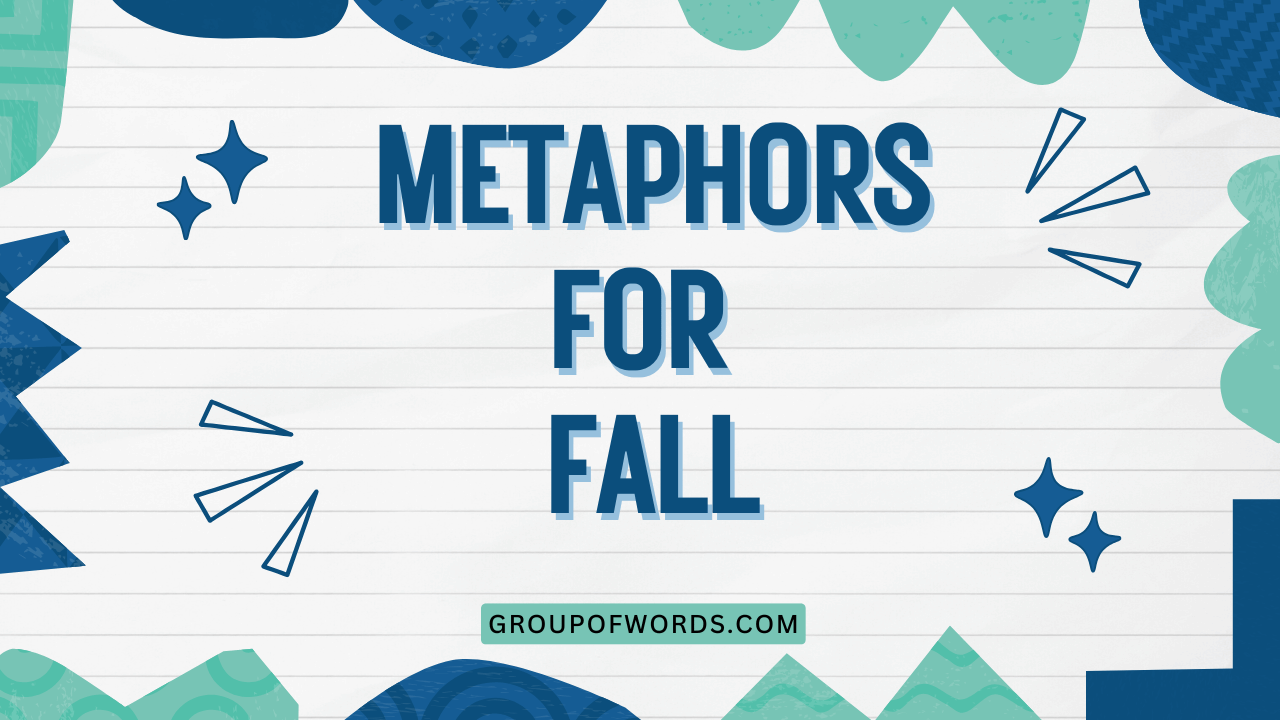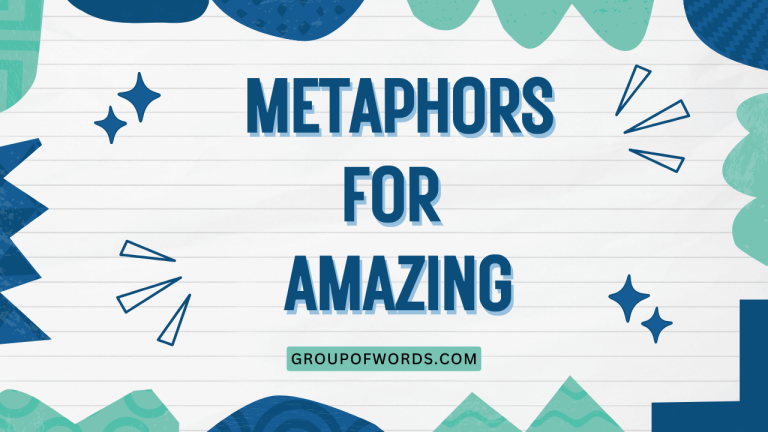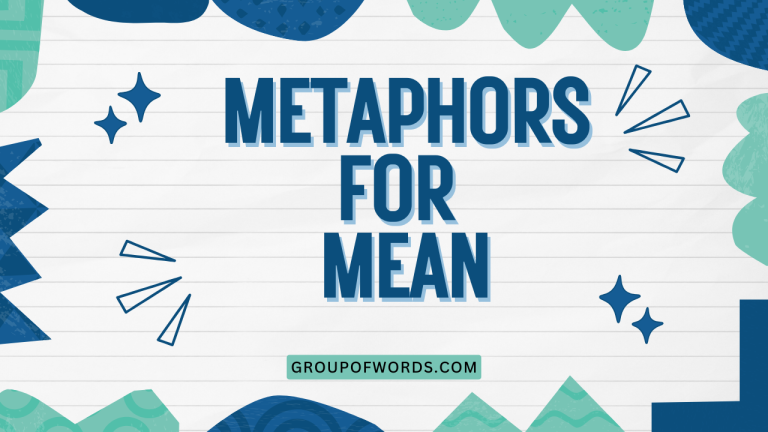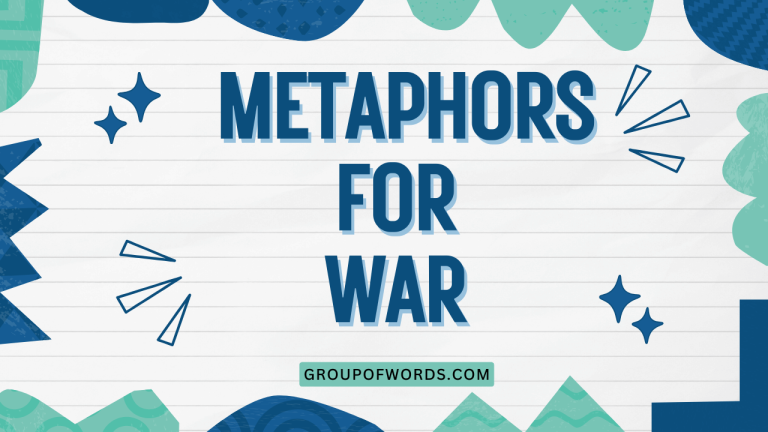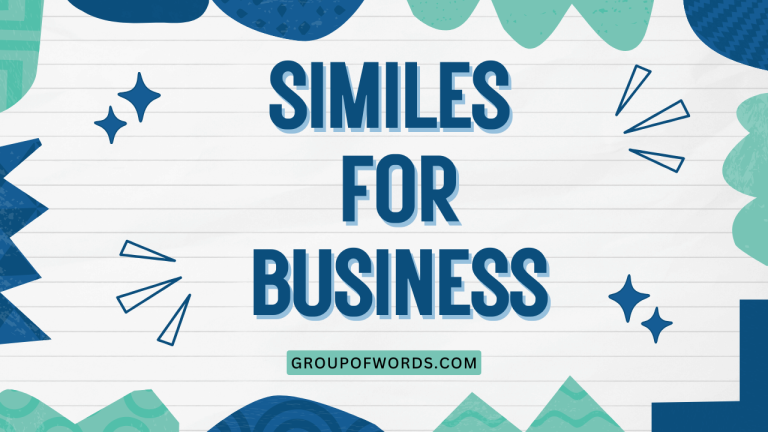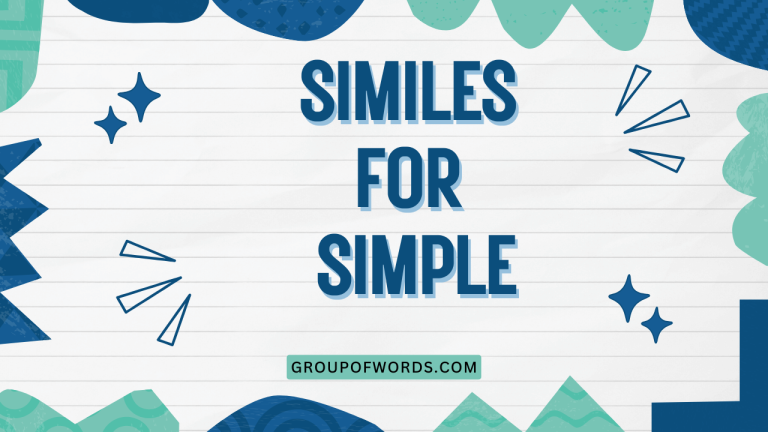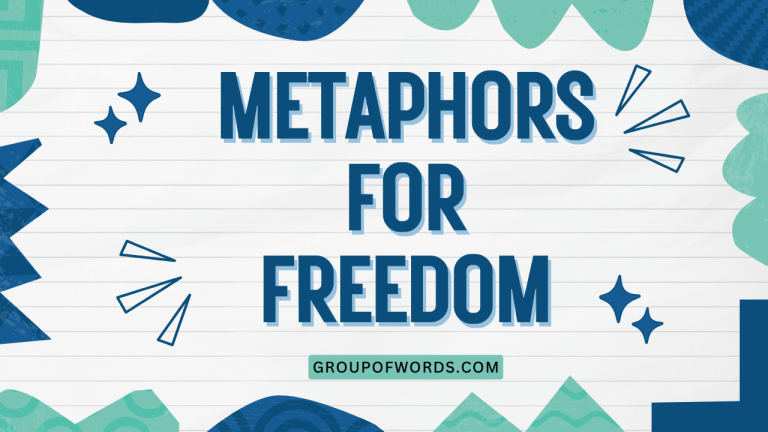Falling into Figurative Language: Mastering Metaphors for Autumn
Autumn, or fall, is a season rich in imagery and symbolism. It’s a time of transition, change, and preparation for the colder months ahead.
This makes it a fertile ground for metaphors, figures of speech that compare two unlike things to create a vivid and insightful connection. Understanding metaphors for fall not only enhances your appreciation of literature and poetry but also strengthens your grasp of figurative language and its persuasive power.
This article will explore the definition, structure, usage, and common errors associated with fall metaphors. This guide is designed for English language learners of all levels, from beginners seeking to expand their vocabulary to advanced speakers aiming to refine their understanding of nuanced expressions.
By the end of this article, you’ll be able to identify, interpret, and create compelling metaphors that capture the essence of autumn. You’ll also gain a deeper understanding of how metaphors function within the broader context of English grammar and rhetoric.
So, let’s embark on this journey through the colorful landscape of fall metaphors!
Table of Contents
- Introduction
- Definition of Metaphor
- Classification of Metaphors
- Function of Metaphors
- Contexts for Using Metaphors
- Structural Breakdown of Fall Metaphors
- Types and Categories of Fall Metaphors
- Metaphors of Change and Transition
- Metaphors of Decay and Endings
- Metaphors of Harvest and Abundance
- Metaphors of Warmth and Comfort
- Metaphors of Preparation and Reflection
- Examples of Fall Metaphors
- Nature-Based Fall Metaphors
- Life Cycle Fall Metaphors
- Emotional State Fall Metaphors
- Time and Passage Metaphors
- Economic Fall Metaphors
- Usage Rules for Fall Metaphors
- Clarity and Relevance
- Consistency of Tone
- Cultural Sensitivity
- Common Mistakes with Fall Metaphors
- Mixing Metaphors Inappropriately
- Using Overused Cliches
- Misinterpretation of Intent
- Practice Exercises
- Exercise 1: Identifying Fall Metaphors
- Exercise 2: Completing Fall Metaphors
- Exercise 3: Creating Original Fall Metaphors
- Advanced Topics in Fall Metaphors
- Extended Metaphors in Fall Literature
- Subtle and Implied Fall Metaphors
- Frequently Asked Questions
- Conclusion
Definition of Metaphor
A metaphor is a figure of speech that directly compares two unlike things without using “like” or “as.” It asserts that one thing *is* another, creating a connection based on shared qualities or characteristics. Metaphors are powerful tools for enriching language, conveying complex ideas, and evoking emotions.
Classification of Metaphors
Metaphors can be classified in several ways, including:
- Standard Metaphors: Explicit comparisons (e.g., “Life is a journey”).
- Implied Metaphors: Comparisons suggested indirectly (e.g., “He roared his disapproval,” implying he is like a lion).
- Dead Metaphors: Metaphors so overused they have lost their figurative meaning (e.g., “the heart of the matter”).
- Mixed Metaphors: Combining incompatible metaphors, often unintentionally humorous (e.g., “Let’s nip it in the bud before it snowballs”).
Function of Metaphors
Metaphors serve several crucial functions in language:
- Clarification: Explaining complex concepts by relating them to something familiar.
- Emphasis: Highlighting specific qualities or characteristics.
- Imagery: Creating vivid mental pictures for the reader.
- Emotional Connection: Evoking feelings and associations.
- Persuasion: Making an argument more compelling.
Contexts for Using Metaphors
Metaphors are appropriate in a wide range of contexts, including:
- Literature: Poetry, novels, short stories, and plays.
- Speeches: Political addresses, motivational talks, and presentations.
- Everyday Conversation: Informal discussions and personal anecdotes.
- Journalism: Descriptive reporting and opinion pieces.
- Advertising: Creating memorable and persuasive messages.
Structural Breakdown of Fall Metaphors
A basic metaphor consists of two key elements: the tenor and the vehicle. The tenor is the subject being described, while the vehicle is the object or concept used to illustrate it. In the case of fall metaphors, the tenor is often a concept related to autumn (e.g., change, decline, harvest), and the vehicle is something that embodies that concept.
For instance, in the metaphor “Fall is a symphony of colors,” “fall” is the tenor, and “symphony of colors” is the vehicle. The comparison suggests that fall, like a symphony, is a complex and beautiful arrangement of different elements.
Understanding this structure helps in both interpreting existing metaphors and crafting new ones. By carefully selecting the vehicle, you can effectively convey the desired meaning and evoke the intended emotional response.
Types and Categories of Fall Metaphors
Fall metaphors can be categorized based on the specific aspects of autumn they emphasize.
Metaphors of Change and Transition
These metaphors highlight the transformative nature of fall, the shift from summer’s abundance to winter’s dormancy.
Examples:
- Fall is a revolving door between seasons.
- Autumn is nature’s grand finale before its winter intermission.
- Fall is a bridge connecting warmth and cold.
Metaphors of Decay and Endings
These metaphors focus on the decline and death associated with fall, the fading of life and the preparation for winter’s stillness.
Examples:
- Fall is the sunset of the year.
- Autumn is nature’s farewell.
- Fall is the earth slowly closing its eyes.
Metaphors of Harvest and Abundance
These metaphors celebrate the bounty of fall, the culmination of the growing season and the reaping of rewards.
Examples:
- Fall is a cornucopia of blessings.
- Autumn is the earth’s overflowing treasure chest.
- Fall is the season of reaping what you sow.
Metaphors of Warmth and Comfort
These metaphors emphasize the cozy and comforting aspects of fall, the feeling of home and hearth as the weather turns colder.
Examples:
- Fall is a warm blanket on a chilly evening.
- Autumn is a cup of hot cocoa by the fire.
- Fall is the season of cozy sweaters and crackling fireplaces.
Metaphors of Preparation and Reflection
These metaphors highlight the idea of preparing for the future and taking time for introspection during the fall season.
Examples:
- Fall is a time for gathering strength before the winter.
- Autumn is the season for reflecting on the year’s journey.
- Fall is nature’s way of preparing for a long sleep.
Examples of Fall Metaphors
Here are several examples of fall metaphors, categorized for clarity.
Nature-Based Fall Metaphors
These metaphors draw comparisons between fall and various aspects of the natural world.
The following table provides a detailed list of nature-based fall metaphors.
| Metaphor | Explanation |
|---|---|
| Fall is a painter’s palette. | The vibrant colors of autumn leaves are likened to the colors on a painter’s palette. |
| Autumn is nature’s bonfire. | The fiery colors of fall foliage are compared to the flames of a bonfire. |
| Fall is a whispering wind. | The gentle breezes of autumn are personified as a whispering voice. |
| Autumn is a golden cascade. | The falling leaves are visualized as a cascade of gold. |
| Fall is a rustling symphony of leaves. | The sound of leaves falling is compared to symphonic music. |
| Autumn is the earth’s exhale. | The season is seen as the earth breathing out before winter. |
| Fall is a slumbering forest. | The forest is preparing to sleep through winter. |
| Autumn is a tapestry of changing hues. | The varying colors are like threads in a woven tapestry. |
| Fall is a dance of falling leaves. | Leaves are personified as dancers gracefully descending. |
| Autumn is nature’s art gallery. | The scenic views are curated like art in a gallery. |
| Fall is a season of pumpkin smiles. | Pumpkins, often carved with smiles, represent the season’s joy. |
| Autumn is an orchard’s sweet embrace. | The abundance of fruit is like a warm, welcoming hug. |
| Fall is a crisp apple’s first bite. | The taste and sensation are uniquely autumnal. |
| Autumn is a cornfield’s fading glory. | The harvested fields represent a past abundance. |
| Fall is a gourd’s gentle curve. | The shape of gourds symbolizes the season’s aesthetic. |
| Autumn is a squirrel’s frantic gathering. | Squirrels preparing for winter mirrors human preparations. |
| Fall is a migration of geese overhead. | The sight of migrating geese signifies seasonal change. |
| Autumn is a spiderweb glistening with dew. | The beauty of a dewy web is a subtle seasonal detail. |
| Fall is the amber glow of sunset. | The light of the setting sun mirrors the season’s warmth. |
| Autumn is the forest’s final song. | The sounds of the forest are like a farewell melody. |
| Fall is a tapestry woven with gold and crimson threads. | Describes the rich colors of the leaves as threads in a tapestry. |
| Autumn is the forest’s last hurrah before winter’s silence. | Highlights the vibrant activity of fall before the quiet of winter. |
| Fall is a symphony of rustling leaves and crisp air. | Combines the sounds and sensations of the season into a musical metaphor. |
Life Cycle Fall Metaphors
These metaphors connect fall to the stages of life, particularly aging and death.
Below is a table that lists examples of life-cycle based fall metaphors.
| Metaphor | Explanation |
|---|---|
| Fall is the autumn of life. | Fall is equated to the later years of a person’s life. |
| Autumn is the twilight of the year. | The end of the year is compared to the fading light of twilight. |
| Fall is life’s descent into winter. | Life’s progression is paralleled with the transition to winter. |
| Autumn is the old age of the seasons. | The season represents the final stage of the year’s life cycle. |
| Fall is the year’s graceful decline. | The season’s transition is seen as elegant and natural. |
| Autumn is the time when the year prepares its will. | The year is personified, preparing for its end like a person making a will. |
| Fall is the final act in the year’s play. | The season is likened to the concluding act of a theatrical performance. |
| Autumn is the closing chapter of the year’s story. | The season is seen as the concluding part of a longer narrative. |
| Fall is the sunset of the growing season. | The end of the growing season is compared to the setting sun. |
| Autumn is the year’s last dance. | The season represents the final, vibrant activity before stillness. |
| Fall is the silver in the year’s hair. | The changing colors are like the graying hair of an aging person. |
| Autumn is the year’s reflective pause. | The season is a time for introspection and contemplation. |
| Fall is the time when the year gathers its memories. | The year is personified, collecting experiences like memories. |
| Autumn is the year’s farewell tour. | The season is like a performer’s final series of shows. |
| Fall is the year’s last curtain call. | The end of the year is compared to the final bow of a performer. |
| Autumn is the year’s final bow. | Represents the end of the year with a respectful gesture. |
| Fall is the aging artist reviewing their masterpiece. | The season is seen as a period of reflection and assessment. |
| Autumn is the year’s quiet resignation. | The season embodies a peaceful acceptance of its end. |
| Fall is the season when the year settles its accounts. | The year is personified, resolving outstanding issues. |
| Autumn is the year’s gentle surrender to winter. | The season gracefully yields to the coming cold. |
| Fall is the season when the earth prepares for its long rest. | Highlights the earth’s preparation for winter dormancy. |
| Autumn is the twilight of the garden’s life. | Compares the end of the gardening season to the fading light of twilight. |
Emotional State Fall Metaphors
These metaphors link fall to various human emotions, such as melancholy, nostalgia, and contentment.
The table below demonstrates fall metaphors linked to emotions.
| Metaphor | Explanation |
|---|---|
| Fall is a season of bittersweet memories. | Fall evokes feelings of both joy and sadness. |
| Autumn is a nostalgic sigh. | The season is personified as a longing for the past. |
| Fall is a melancholy dream. | The season is associated with a state of wistful sadness. |
| Autumn is a contemplative pause. | The season invites reflection and introspection. |
| Fall is a season of quiet contentment. | The season brings a sense of peace and satisfaction. |
| Autumn is a gentle reminder of impermanence. | The season highlights the transient nature of life. |
| Fall is a whisper of past summers. | The season evokes memories of warmer times. |
| Autumn is a poignant melody of change. | The season’s transition is felt as a sorrowful but beautiful tune. |
| Fall is a season of hopeful anticipation. | The season brings a sense of looking forward to the future. |
| Autumn is a comforting embrace. | The season provides a feeling of warmth and security. |
| Fall is a season of gratitude for the year’s gifts. | The season inspires thankfulness for the blessings of the past year. |
| Autumn is a heartfelt farewell. | The season expresses a deep sense of parting. |
| Fall is a season of reflective solitude. | The season encourages quiet introspection and being alone with one’s thoughts. |
| Autumn is a season of cozy introspection. | Combines the comfort of the season with deep self-reflection. |
| Fall is a season of whispered secrets in the wind. | The wind carries a sense of mystery and hidden knowledge. |
| Autumn is a season of gentle acceptance. | The season embodies a peaceful acknowledgment of what is. |
| Fall is a season of letting go. | The season represents the act of releasing what is no longer needed. |
| Autumn is a season of preparing for rest. | The season marks a time to get ready for a period of inactivity. |
| Fall is the season when the heart turns inward. | Highlights the introspective nature of the season. |
| Autumn is a gentle ache of beauty. | Captures the bittersweet beauty of the season. |
| Fall is the season when the soul finds solace in nature’s decline. | Highlights the comfort found in nature’s transition to winter. |
| Autumn is a lullaby sung by the wind through the trees. | Compares the wind’s sound to a soothing song. |
Time and Passage Metaphors
These metaphors characterize fall as a marker of time, representing the transition from one period to another.
Here is a selection of time and passage metaphors associated with fall.
| Metaphor | Explanation |
|---|---|
| Fall is a checkpoint in the year’s journey. | Fall marks a significant point in the annual cycle. |
| Autumn is the year’s turning point. | The season represents a shift in direction or focus. |
| Fall is a bridge between summer and winter. | The season connects two distinct periods of the year. |
| Autumn is the gateway to the colder months. | The season leads into the winter season. |
| Fall is the year’s odometer resetting. | The season marks the end of one cycle and the beginning of another. |
| Autumn is the year’s hourglass running low. | The season indicates that time is running out for the year. |
| Fall is the year’s calendar turning to the final pages. | The season represents the end of the year’s schedule. |
| Autumn is the year’s clock winding down. | The season symbolizes the slowing pace as the year ends. |
| Fall is the year’s narrative reaching its climax. | The season represents the peak of the annual story. |
| Autumn is the year’s train pulling into the station. | The season signifies the arrival at the end of the year’s journey. |
| Fall is the year’s symphony reaching its final movement. | The season represents the concluding part of a musical piece. |
| Autumn is the year’s book nearing its last chapter. | The season indicates the end of the year’s story. |
| Fall is the year’s film rolling to its credits. | The season represents the end of the year’s visual narrative. |
| Autumn is the year’s game entering its final innings. | The season signifies the concluding stage of the year’s activities. |
| Fall is the year’s race heading towards the finish line. | The season represents the final stretch of the annual cycle. |
| Autumn is the year’s song fading to a close. | The season signifies the end of the year’s melody. |
| Fall is the year’s dance slowing to a stop. | The season represents the end of the year’s lively movements. |
| Autumn is the year’s play reaching its final scene. | The season signifies the concluding part of the year’s performance. |
| Fall is the time when the year prepares to hand over the baton to winter. | Highlights the transition of seasons. |
| Autumn is a bookmark placed at the end of summer’s chapter. | Compares the transition between seasons to placing a bookmark in a book. |
Economic Fall Metaphors
These metaphors use economic terms to describe fall, often focusing on harvest and preparation for leaner times.
The following table gives economic fall metaphors for learners.
| Metaphor | Explanation |
|---|---|
| Fall is the season of nature’s dividends. | Fall represents the rewards earned from the year’s growth. |
| Autumn is the year’s financial harvest. | The season signifies the reaping of economic benefits. |
| Fall is the time to stock up for winter’s recession. | The season represents preparing for a period of scarcity. |
| Autumn is nature’s savings account. | The season symbolizes storing resources for future needs. |
| Fall is the season of reaping what you sow. | The season represents the consequences of past actions. |
| Autumn is when nature balances its books. | The season signifies an accounting of resources and outcomes. |
| Fall is the time to invest in winter’s survival. | The season represents allocating resources for future needs. |
| Autumn is nature’s inventory check. | The season signifies assessing available resources. |
| Fall is the time to budget for the lean months ahead. | The season represents planning for periods of scarcity. |
| Autumn is nature’s economic downturn. | The season symbolizes a period of reduced activity and growth. |
| Fall is the season when nature cashes in its investments. | The season represents realizing the benefits of past efforts. |
| Autumn is nature’s market correction. | The season symbolizes an adjustment to more sustainable levels. |
| Fall is the time to consolidate resources for winter’s challenges. | The season represents gathering and organizing resources. |
| Autumn is nature’s stimulus package for the coming winter. | The season provides resources to support survival through winter. |
| Fall is the season when nature’s assets mature. | The season represents the culmination of growth and development. |
| Autumn is nature’s strategic reserve. | The season symbolizes a stockpile of resources for future use. |
| Fall is the time to liquidate summer’s holdings. | The season represents converting resources into usable forms. |
| Autumn is nature’s credit line for the year ahead. | The season symbolizes access to resources for future needs. |
| Fall is the season when nature audits its performance. | Highlights the year’s harvest. |
| Autumn is the season of nature’s annual report. | Compares the season to a comprehensive summary of the year’s activities. |
Usage Rules for Fall Metaphors
While metaphors can add richness and depth to your writing, it’s important to use them judiciously and effectively.
Clarity and Relevance
A good metaphor should be clear and relevant to the subject matter. Avoid metaphors that are too obscure or confusing for your audience.
The connection between the tenor and the vehicle should be readily apparent.
Consistency of Tone
Ensure that your metaphors align with the overall tone of your writing. A lighthearted piece might benefit from playful metaphors, while a serious discussion might require more somber and reflective ones.
Cultural Sensitivity
Be mindful of cultural differences when using metaphors. Some metaphors may have different connotations in different cultures or may not translate well across languages.
If writing for a diverse audience, consider using more universal and accessible metaphors.
Common Mistakes with Fall Metaphors
Even experienced writers can sometimes stumble when using metaphors. Here are some common pitfalls to avoid.
Mixing Metaphors Inappropriately
Mixing metaphors occurs when you combine two or more incompatible metaphors, creating a confusing or nonsensical image. For example, “Let’s grab the bull by the horns and nip it in the bud” combines two unrelated idioms.
Incorrect: The project is a rollercoaster ride on a slippery slope.
Correct: The project is a rollercoaster ride.
Correct: The project is a slippery slope.
Using Overused Cliches
Cliches are metaphors that have become so common that they have lost their impact. While they may be easy to use, they often lack originality and can make your writing sound stale.
Examples include “falling like leaves” or “golden as the autumn sun.” Try to come up with fresh and original metaphors to make your writing stand out.
Cliche: He was as busy as a bee in fall.
Original: He was a whirlwind of activity, preparing for the winter months.
Misinterpretation of Intent
Ensure your metaphor conveys the message you intend. If a metaphor is too abstract or poorly chosen, it can lead to misinterpretation by the reader.
Always consider your audience and how they might perceive your metaphor.
Unclear: Fall is a muted echo.
Clearer: Fall is a muted echo of summer’s vibrancy.
Practice Exercises
Test your understanding of fall metaphors with these exercises.
Exercise 1: Identifying Fall Metaphors
Identify the metaphors in the following sentences and explain what they mean.
Instructions: Read the sentences below and identify the metaphors. Then, explain what each metaphor means in the context of the sentence.
| Question | Answer |
|---|---|
| 1. Fall is the year’s last, loveliest smile. | Metaphor: “Fall is the year’s last, loveliest smile.” Explanation: Fall is personified as the year smiling, suggesting it’s the most beautiful part of the year before it ends. |
| 2. Autumn is a painter working in broad strokes of crimson and gold. | Metaphor: “Autumn is a painter.” Explanation: The vibrant colors of fall are being compared to the work of an artist. |
| 3. Fall is a season of letting go, watching summer’s green flags surrender to winter’s white. | Metaphor: “Summer’s green flags surrender to winter’s white.” Explanation: The vibrant green of summer is likened to a flag being lowered in surrender to the white of winter, symbolizing the end of summer. |
| 4. Autumn is the heart’s quiet season, a time for reflection and gratitude. | Metaphor: “Autumn is the heart’s quiet season.” Explanation: Autumn is compared to a period of calm in one’s emotions, encouraging introspection. |
| 5. Fall is a symphony of rustling leaves and crisp air, a melody of change. | Metaphor: “Fall is a symphony.” Explanation: The sounds and sensations of fall are likened to a harmonious musical composition. |
| 6. The forest in autumn is a burning bush of color. | Metaphor: “The forest… is a burning bush of color.” Explanation: The intense colors of the fall foliage are compared to the image of a burning bush. |
| 7. Fall is a time when the trees undress, preparing for their winter sleep. | Metaphor: “The trees undress.” Explanation: The trees losing their leaves are personified as undressing, getting ready for winter. |
| 8. Autumn is the year’s deep breath before the long winter nap. | Metaphor: “Autumn is the year’s deep breath.” Explanation: Autumn is personified as the year taking a deep breath before the winter. |
| 9. Fall is the year’s final act, a grand performance before the curtain closes. | Metaphor: “Fall is the year’s final act.” Explanation: Fall is compared to the last part of a play or performance. |
| 10. Autumn is a golden treasure chest, overflowing with the riches of the harvest. | Metaphor: “Autumn is a golden treasure chest.” Explanation: Autumn is compared to a treasure chest. |
Exercise 2: Completing Fall Metaphors
Complete the following sentences by adding a suitable metaphor for fall.
Instructions: Fill in the blank in each sentence with an appropriate metaphor for fall.
| Question | Answer |
|---|---|
| 1. Fall is like __________, gently fading away. | Fall is like a watercolor painting, gently fading away. |
| 2. Autumn is __________, a time to gather and reflect. | Autumn is a quiet library, a time to gather and reflect. |
| 3. Fall is __________, preparing for the cold months ahead. | Fall is a diligent squirrel, preparing for the cold months ahead. |
| 4. Autumn is __________, filled with the colors of the season. | Autumn is a vibrant mosaic, filled with the colors of the season. |
| 5. Fall is __________, signaling the end of summer’s reign. | Fall is a solemn bell, signaling the end of summer’s reign. |
| 6. Autumn is __________, each leaf a note in its melody. | Autumn is a natural orchestra, each leaf a note in its melody. |
| 7. Fall is __________, leading us toward winter’s rest. | Fall is a peaceful guide, leading us toward winter’s rest. |
| 8. Autumn is __________, a brief but beautiful transition. | Autumn is a fleeting dream, a brief but beautiful transition. |
| 9. Fall is __________, offering warmth before the chill. | Fall is a comforting fire, offering warmth before the chill. |
